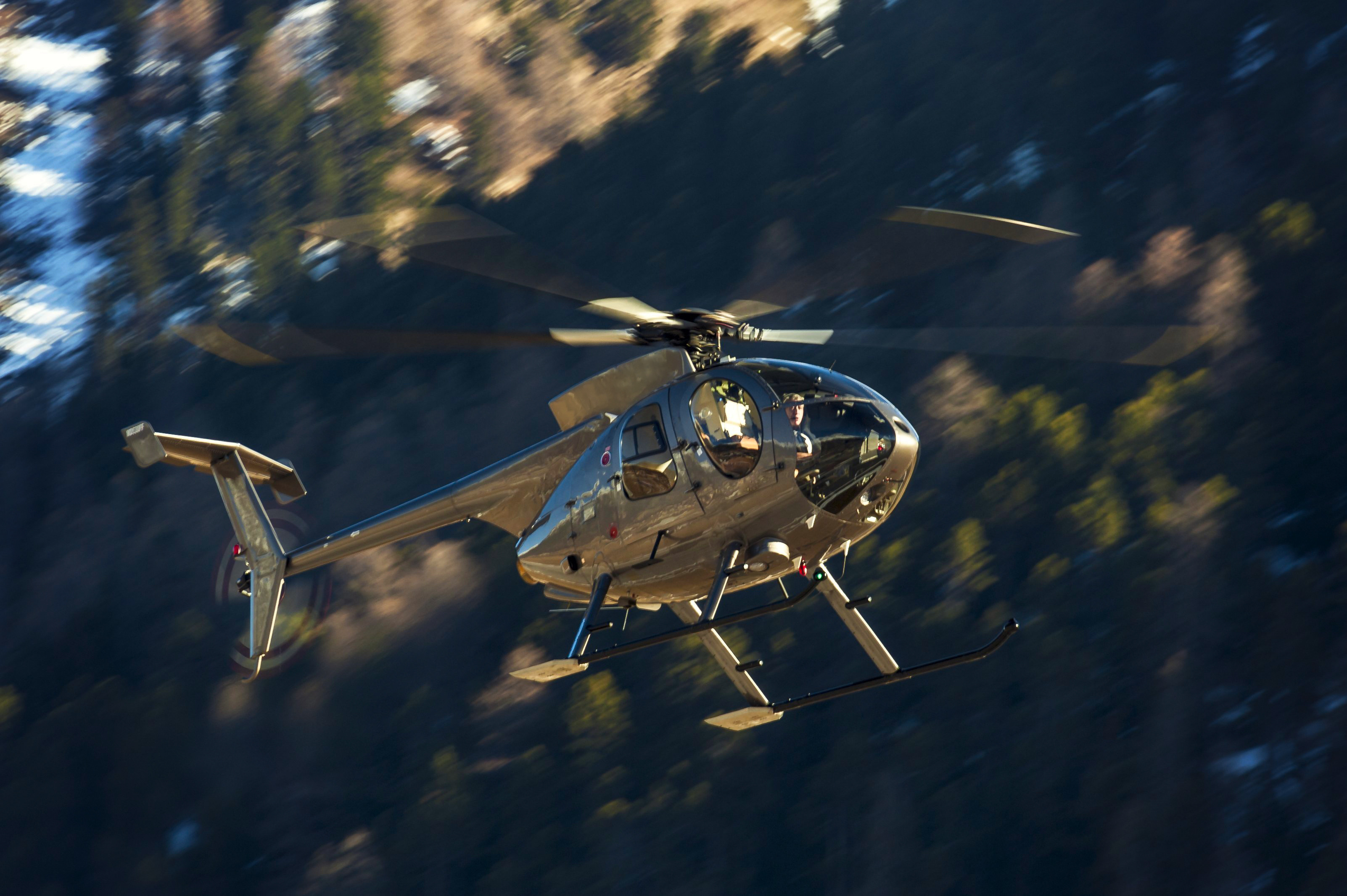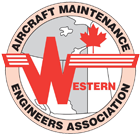WinAir Presents: The Absolute Guide to the MD 500 Helicopter Infographic—image highlights essential information on MD Helicopters’ most popular light utility civilian and military helicopter
The Absolute Guide to the MD 500 Helicopter Infographic was created using data obtained via Wikipedia’s “MD Helicopters MD 500” article and the MD Helicopters website. It showcases information on typical aircraft uses and includes vital statistics on the MD 500 helicopter. The infographic also includes general characteristics and performance outputs for MD Helicopters’ Model 500C, 500E, and 500F.
The history of the helicopter commonly referred to as the “MD 500,” dates as far back as the 1960s, when the US Army opened a competition to obtain a Light Observation Helicopter (LOH). Several companies submitted bids for this competition, including the Hughes Tool Company. Hughes won the LOH contract in 1965 based on a helicopter design that would go on to become the OH-6 Cayuse. It was during this time-frame that Hughes began developing the Hughes 500, a civilian version of the OH-6A Cayuse, which decades later would come to be known as the MD 500. The aircraft achieved first flight in February, 1963, and was introduced into service in 1967. It has remained in production since this date.
Over the years, this helicopter was produced by multiple aircraft manufacturers and in a number of variants. After the Hughes Tool Company rebranded as Hughes Helicopters, Inc. in 1981, the company was purchased by McDonnell Douglas in January, 1984. The company later merged with Boeing in August, 1997, who then sold the civilian line of helicopters to MD Helicopter Holdings Inc. in 1999. The company would go on to be purchased by Patriarch Partners, LLC, in 2005, who transformed the business into MD Helicopters, Inc. At present, the MD 500 helicopter is being manufactured by MD Helicopters, Inc. as part of their MD 500 Helicopter series. This series includes the MD 500E, MD 520N, and the MD 530F.
The MD 500 Helicopter is an exceptionally versatile and extremely robust helicopter. It is well known for its quick speed, ease of maneuverability, and ability to operate effectively in hot climates and at high altitudes. This makes it the perfect helicopter for participating in a variety of challenging missions and is the reason why the aircraft is particularly popular with law enforcement, police agencies, and the military. For these groups, the helicopter is commonly utilized for Search And Rescue (SAR), Special Weapons and Tactics (SWAT), reconnaissance, and attack operations. In terms of the helicopter’s civilian and para-public applications, it can be used for corporate VIP travel, medevac/air ambulance operations, and for a variety of utility/hydro focused missions.
For easy reference, a summary of all infographic information is included below the image.
(Click on the image to zoom into the material)
The Absolute Guide to the MD 500 Helicopter Inforgraphic Summary
Introducing the MD 500 Helicopter
The MD 500 Helicopter series is an American family of light utility civilian and military helicopters that is manufactured by MD Helicopters.[2]
The aircraft was developed from the Hughes 500, a civilian version of the US Army’s OH-6A Cayuse/Loach.[3]
At present, the series includes the MD 500E, MD 520N, and the MD 530F.[4]
Typical Aircraft Uses
- Military
- Law Enforcement
- Utility
- EMS
- VIP
Vital Statistics[7]
- Role: Light utility helicopter
- Nation of Origin: United States
- Manufacturer: Hughes Helicopters; McDonnell Douglas Helicopter Systems; MD Helicopters
- First Flight: February 27th, 1963
- Introduction: 1967
- Status: In Service
- Primary User: Various police agencies
- Produced: 1967–present
- Number Built: 4,700
- Developed From: Hughes OH-6 Cayuse
- Variants: McDonnell Douglas MD 500 Defender; Boeing AH-6
- Developed Into: MD Helicopters MD 600
Model 500C General Characteristics[9]
- Crew: one–two
- Capacity: five total
- Length: 30 ft 10 in (9.4 m)
- Rotor Diameter: 26 ft 4 in (8.03 m)
- Height: 8 ft 2 in (2.48 m)
- Empty Weight: 1,088 lb (493 kg)
- Maximum Takeoff Weight: 2,250 lb (1,157 kg)
- Powerplant: 1 × Allison 250-C20 Turboshaft, 278 hp (207 kW)
Model 500C Performance Outputs[10]
- Maximum Speed: 152 knots (175 mph, 282 km/h)
- Cruise Speed: 125 knots (144 mph, 232 km/h)
- Range: 375 mi (605 km)
- Service Ceiling: 16,000 ft (4,875 m)
- Rate of Climb: 1,700 ft/min (8.6 m/s)
Model 500E General Characteristics[12]
- Crew: one/two
- Capacity: five total
- Length: 30.81 ft (9.4 m)
- Rotor Diameter: 26.4 ft (8.1 m)>/li>
- Height: 8.4 ft (2.6 m)
- Disc Area: 586.8 ft² (54.5 m²)
- Empty Weight: 1,481 lb (672 kg)
- Maximum Takeoff Weight: 3,000 lb (1,361 kg)
- Powerplant: 1 × Allison 250-C20B Turboshaft, 420 hp (313 kW)
Model 500E Performance Outputs[13]
- Maximum Speed: 152 knots (175 mph, 282 km/h)
- Cruise Speed: 135 knots (155 mph, 250 km/h)
- Range: 267 mi (429 km)
- Service Ceiling: 16,000 ft (4,877 m)
- Rate of Climb: 1,770 ft/min (9 m/s)
Model 530F General Characteristics[15]
- Crew: one/two
- Capacity: five total
- Length: 32 ft 7 in (9.94 m)
- Rotor Diameter: 27 ft 4 in (8.33 m)
- Height: 8 ft 9 in (2.48 m)
- Disc Area: 587.5 sq ft (54.6 sq m)
- Empty Weight: 1,591 lb (722 kg)
- Maximum Takeoff Weight: 3,550 lb (1,610 kg)
- Powerplant: 1 × Allison 250-C30 Turboshaft, 650 hp (485 kW)/li>
Model 530F Performance Outputs[16]
- Maximum Speed: 152 knots (175 mph, 282 km/h)
- Cruise Speed: 135 kn (155 mph, 250 km/h)
- Range: 267 mi (430 km)
- Service Ceiling: 18,700 ft (5,700 m)
- Rate of Climb: 2,070 ft/min (10.5 m/s)
Streamline Maintenance Processes on Helicopters like the MD 500 with WinAir
Tracking and managing maintenance activities can be a challenge when you don’t have the proper tools to expedite processes and create operational transparency. WinAir can do all this and more as a result of streamlined processes that follow actual aviation maintenance work steps. This makes it easy to oversee maintenance and maintain inventory control. By utilizing software that follows aviation industry best practices, you can ensure that your operation remains compliant with industry standards and regulations. Whether your fleet is comprised of MD 500 helicopters or any other aircraft type, be it fixed-wing or rotary-wing, we have you covered.
With the latest release of the software, WinAir Version 7, you can oversee maintenance activities an any type and any number of aircraft. Not only that, but since the software is fully scalable, you can rest assured knowing that WinAir will grow with your operation. So you will never outgrow it and you don’t have to grow into it—the software is there with you every step of the way, so if new functionality is required, you simply add it to your WinAir package to boost capabilities.
To further assist aviation operations with improving their business processes, WinAir offers a variety of additional services such as: implementation consultations, project management, data migration, hosting, and aircraft template building. Each of these services is designed to accelerate and improve the software implementation timeline, assuring a smooth transition to WinAir. With respect to its aircraft template building service, the WinAir Aircraft Services department has developed aircraft templates for an assortment of aircraft types for decades. This includes building aircraft templates for light utility civilian and military helicopters like the MD 500 helicopter.
“I really enjoyed working on the MD 500 helicopter template” says WinAir Aircraft Services Representative, Richard Leroux. “This helicopter is a beautiful machine that is fast and rugged. Our WinAir Aircraft Services department has real world industry experience in aircraft maintenance and is ready to assist your operation with managing maintenance activities on any aircraft type, including the MD 500.”
Whether you are a Heliop, an Operator, an MRO, or a CAMO, WinAir has the right software package for you, designed specifically for your aviation industry subset. The company has bundled together all the vital features and functionality that you require to take your aviation operation to new heights.
Are you interested in having a closer look at WinAir Version 7 in an online demonstration? If so, then contact us now to chat with a member of the WinAir team about your operation’s specific needs!
About WinAir:
Based in London, Ontario, Canada, WinAir has 30 years of experience as a leader in aviation management software. Companies rely on WinAir to efficiently and effectively track and manage aircraft maintenance and inventory control. WinAir is proud to lay claim to hundreds of installations at aviation-specific organizations worldwide. From airlines, to heli-ops, to law enforcement agencies, oil industry suppliers, MROs, CAMOs, medical evacuation response teams and more, businesses using WinAir regard the solution as a necessary component to the successful management of their fleet maintenance programs.






